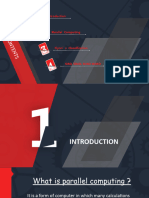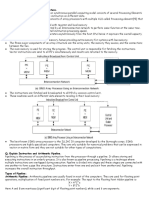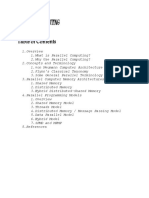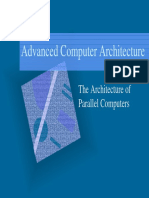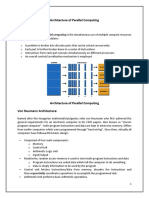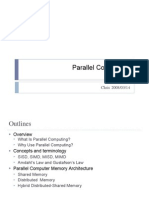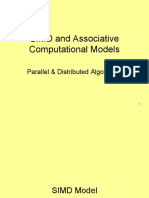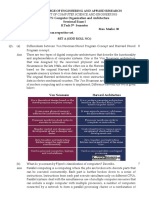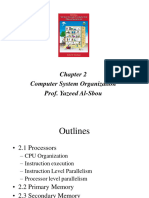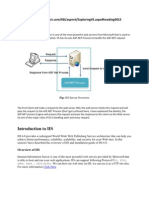0% found this document useful (0 votes)
23 views87 pagesModule 1-3
Parallel computing involves executing multiple processes simultaneously to solve larger problems more efficiently than serial computing, which executes instructions sequentially on a single processor. It is particularly useful in scientific computing, artificial intelligence, and real-time systems, where complex, interrelated events occur concurrently. Flynn's classification categorizes parallel computer architectures into SISD, SIMD, MISD, and MIMD, each with distinct characteristics and applications.
Uploaded by
sachinsachi7964Copyright
© © All Rights Reserved
We take content rights seriously. If you suspect this is your content, claim it here.
Available Formats
Download as PDF, TXT or read online on Scribd
0% found this document useful (0 votes)
23 views87 pagesModule 1-3
Parallel computing involves executing multiple processes simultaneously to solve larger problems more efficiently than serial computing, which executes instructions sequentially on a single processor. It is particularly useful in scientific computing, artificial intelligence, and real-time systems, where complex, interrelated events occur concurrently. Flynn's classification categorizes parallel computer architectures into SISD, SIMD, MISD, and MIMD, each with distinct characteristics and applications.
Uploaded by
sachinsachi7964Copyright
© © All Rights Reserved
We take content rights seriously. If you suspect this is your content, claim it here.
Available Formats
Download as PDF, TXT or read online on Scribd
/ 87








